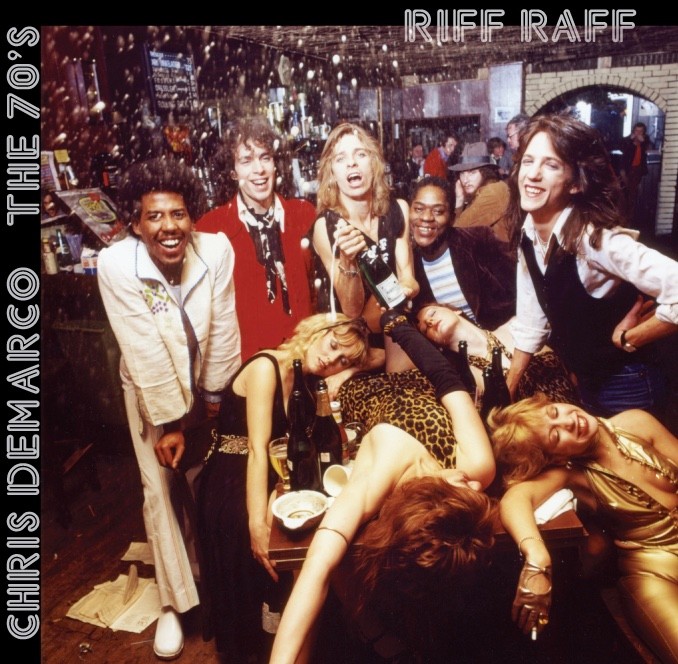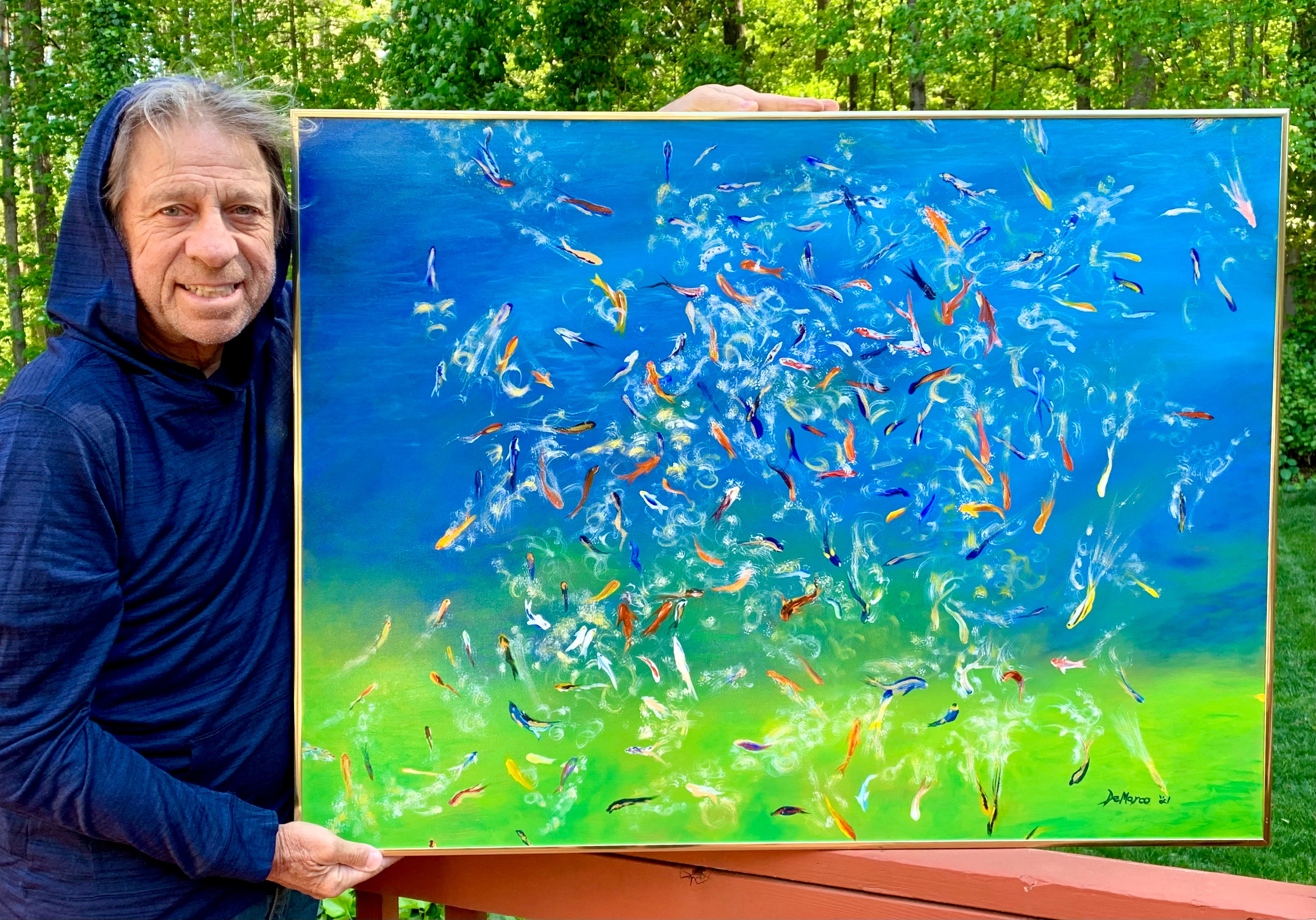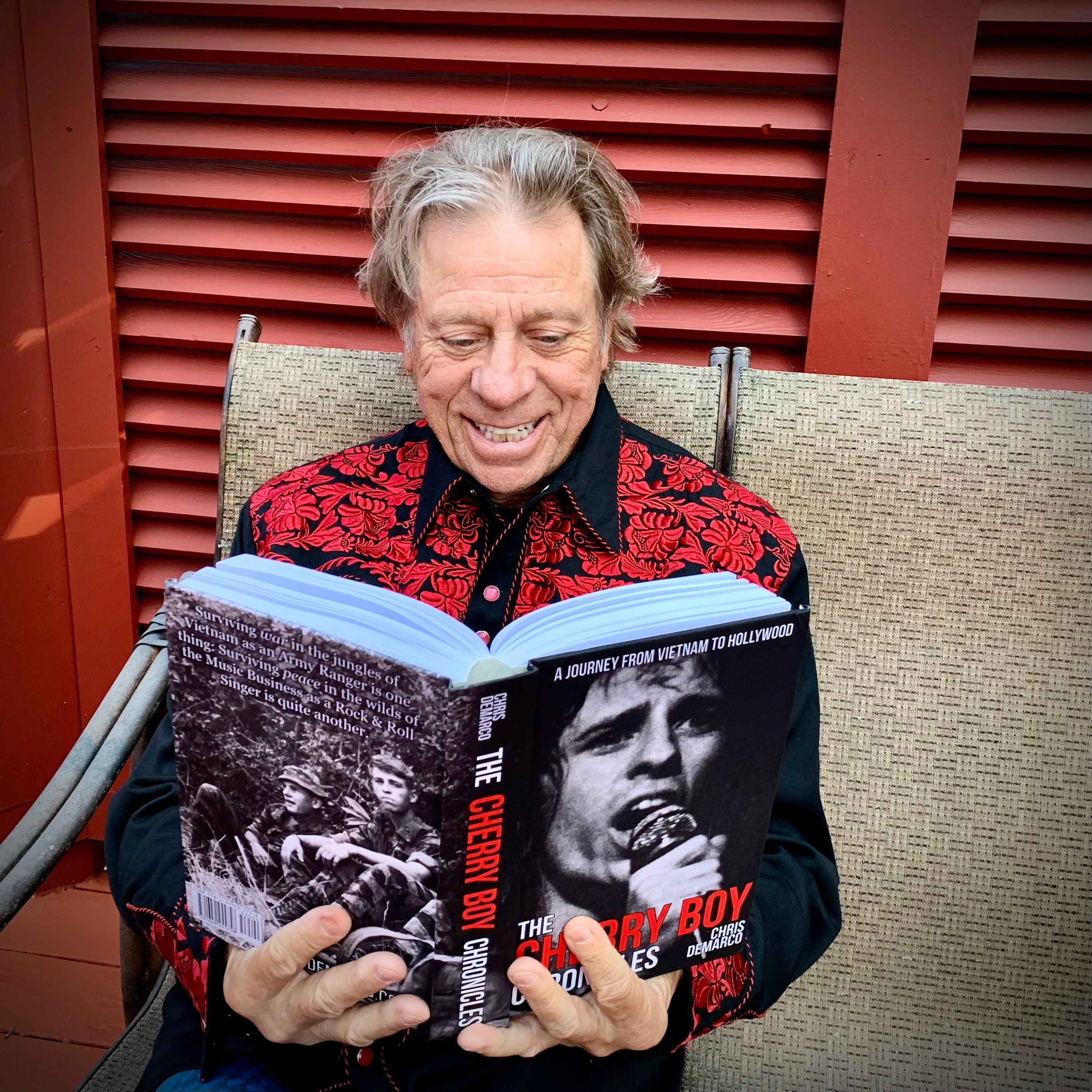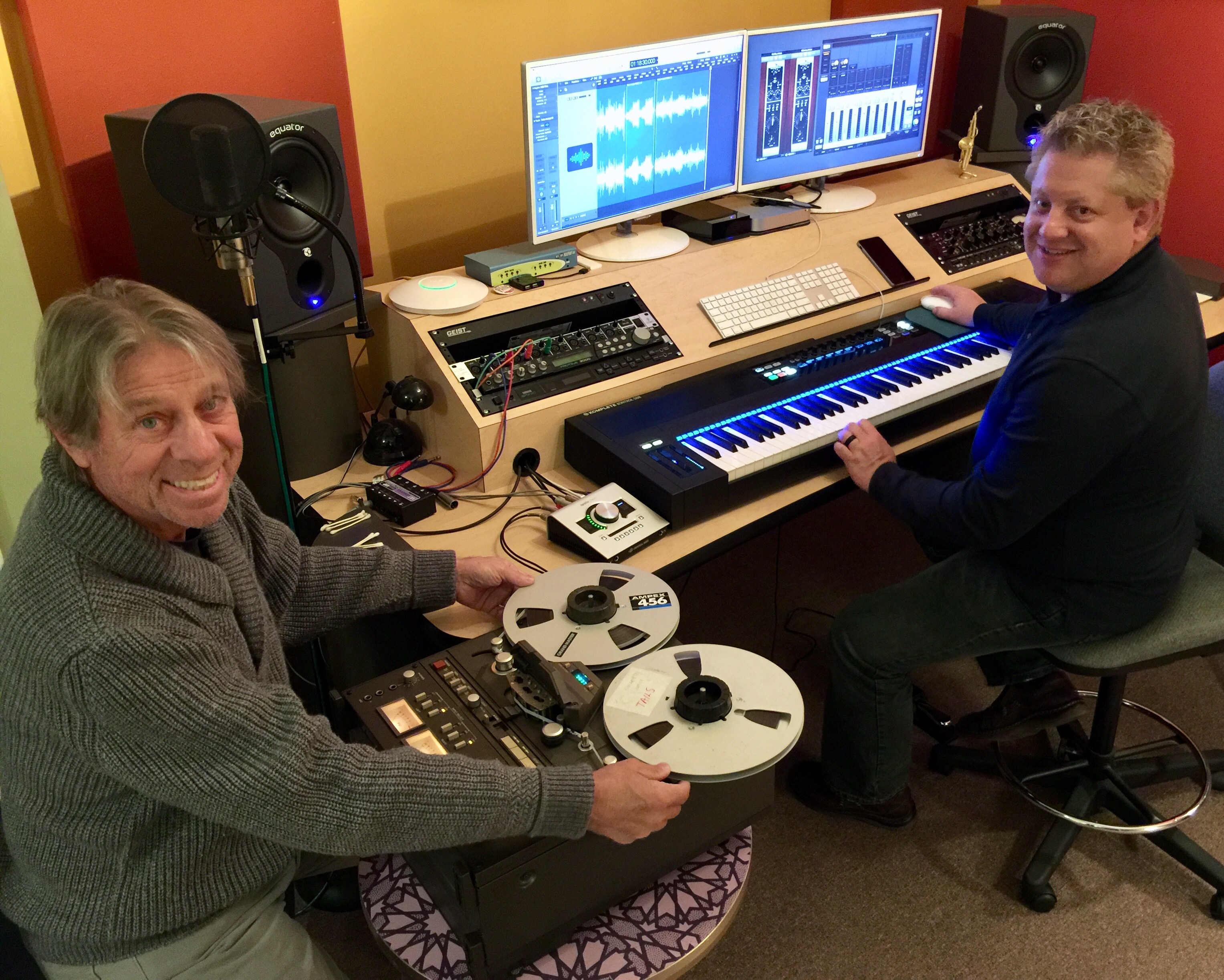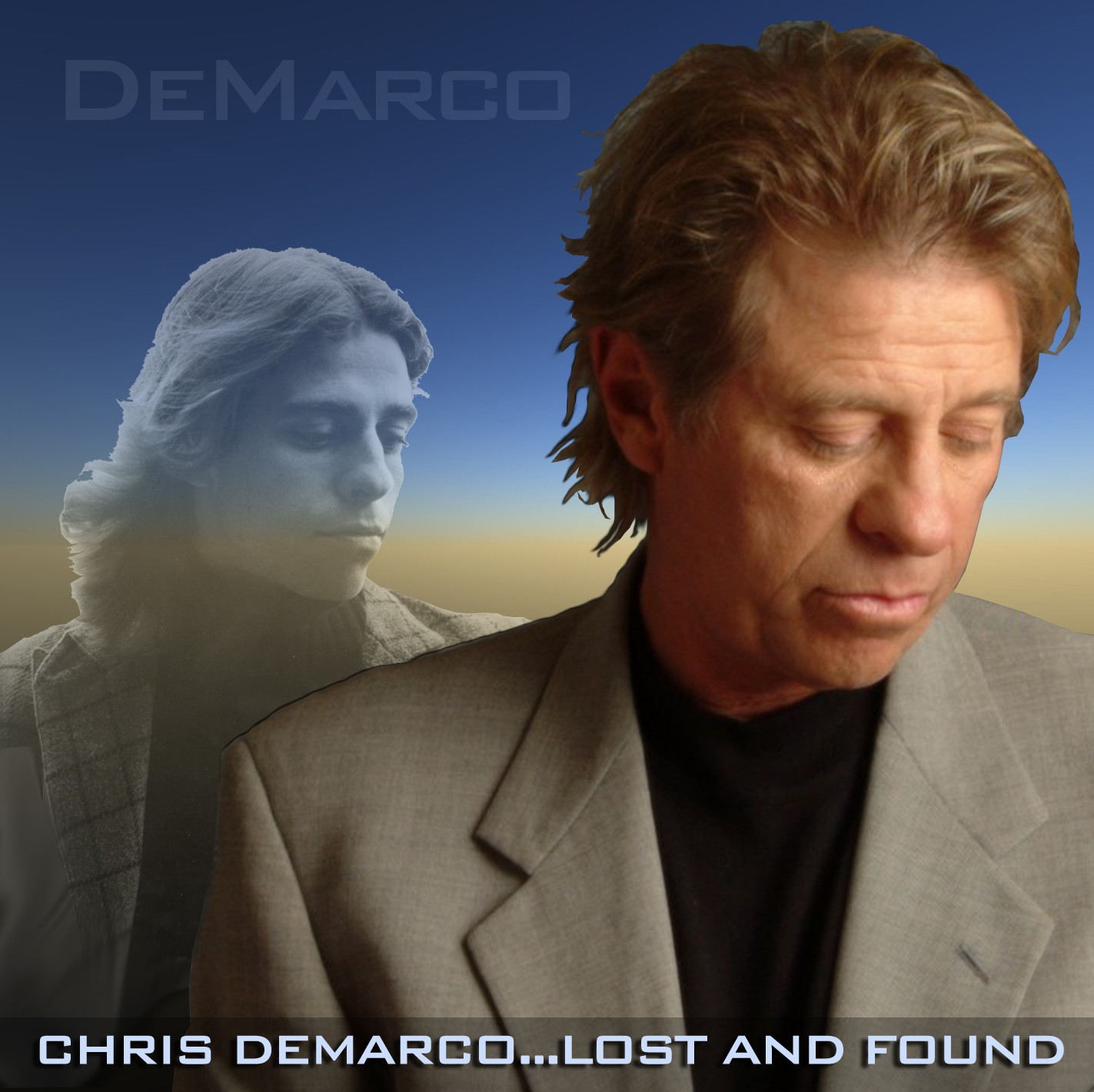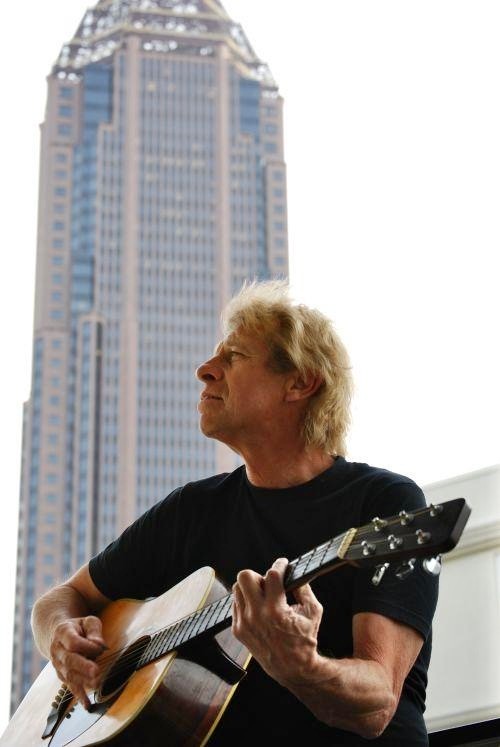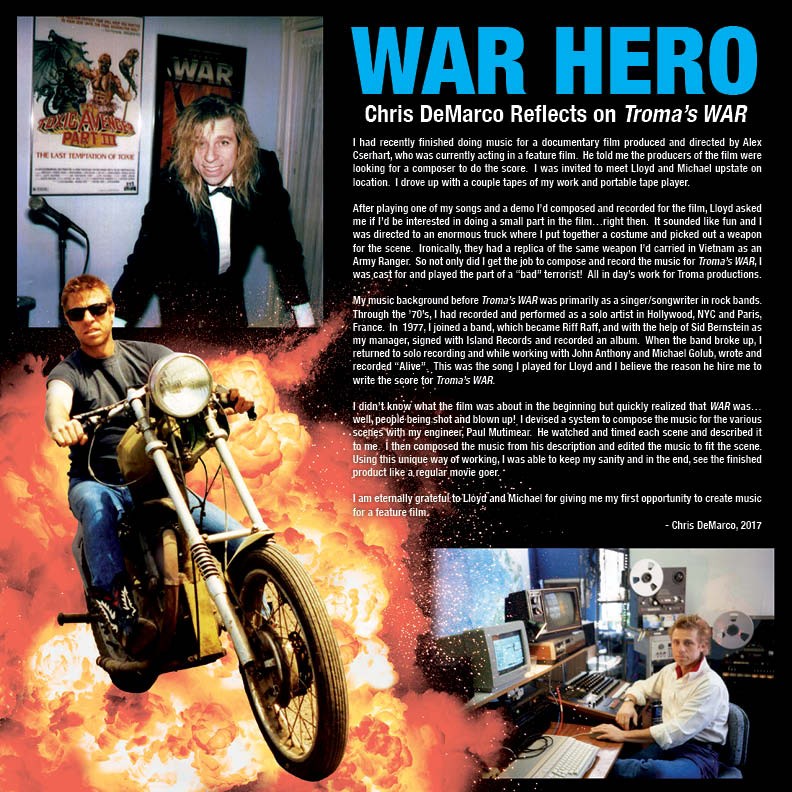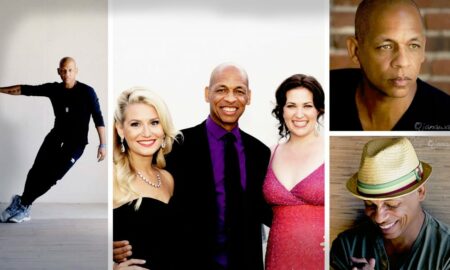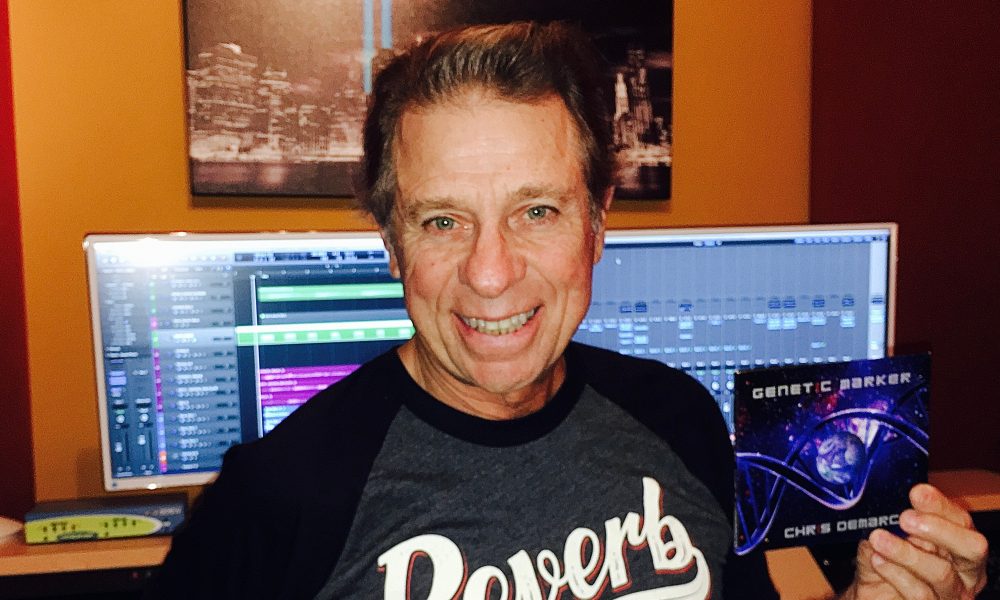

Today we’d like to introduce you to Chris DeMarco.
Hi Chris, we’re thrilled to have a chance to learn your story today. So, before we get into specifics, maybe you can briefly walk us through how you got to where you are today?
My musical career started in Los Angeles in 1969. I was in the VA hospital recuperating from an illness after returning from Vietnam. I had served as an Army LRRP Ranger and had been wounded in combat and medevaced to the States. While I was in the hospital my sister married the bass player (Jim Fielder) in Blood, Sweat, and Tears. Up until then, I had no idea what I’d do when I became healthy. Meeting all the musicians in the band and seeing their unique world was an eye-opener and led me to pursue a dream I’d never before imagined…to become a singer.
My first band was North with Denny Carmassi (Montrose and Heart) and Jim Alcivar (Montrose). When that band dissolved, I moved to Boston to front The Tangerine Zoo. When not on the road, I hung with future rock legends Steve Tyler and Joe Perry (Aerosmith) and sang on the first demos recorded by Tom Scholz (Boston).
In early 1972 I drove west to start my solo career in Hollywood. I played with and learned from some of the best musicians in town. Dick Wagner (Alice Cooper), Michael Monarch (Steppenwolf), Jim Fielder (BS&T), Billy Joel, and Buddy Miles to name just a few. Through the mid-’70s, I played gigs at the Whiskey to showcase my new songs and traveled back and forth from Hollywood to New York City to play numerous venues and to Paris to produce dance music for the European market. I’d been staying very busy, but all my work still hadn’t led to my ultimate goal of signing a recording contract with a major record company.
As so often happens, when you least expect it, a chance decision can change the course of one’s life. In this case, it was a last-minute decision to visit an old friend in the hospital. She didn’t tell me that she had invited Ned Liben to come at the same time…to meet me. Ned had put a band together with super musicians and together they had written a half dozen musical ideas for songs. What they lacked was lyrics, melodies, and a singer to render them. That night I went to Sundragon, Ned’s studio, and after jamming with the band for a couple of hours, I joined the group. I came up with the name Riff Raff and a new direction in my musical life began as a member of a band.
Sid Bernstein, the man who brought the Beatles to America, became our manager and through his great marketing and our playing, we became the “talk of the town” in the NYC rock scene that summer of 1977. It was exciting to see the guys in Led Zepplin, Mick Jagger, Peter Frampton, and Paul Stanley showing up to check us out. In August, we signed with Island Records and by the end of the year, we had completed recording our debut album and awaited its release and our planned tour to begin in the spring of 1978. It never happened. The record company decided to shelve the album, and shortly thereafter, the band broke up. I was back to being a solo artist once again.
I continued writing, recording, and playing gigs around NYC with a new group of musicians. Some of them were; Thommy Price (Billy Idol and Joan Jett), Ken Mazur and Pierre Brock (Robert Palmer), Lars Hanson and Michael Ratti (Rex), and Yogi Horton (John Lennon, Aretha Franklin, B-52s, Diana Ross…)
It was a monumental effort to create master-quality recordings without the backing of a record label. Musicians had to be gathered and rehearsed, and deals with recording studios had to be made, all with a promise that payment would be made when the recordings were sold. The stress was sometimes overwhelming. Many times in the middle of the night, exhausted and yet, unable to sleep, I wanted to quit…and then…MIDI was invented!
Musical instrument digital interface enabled a solo musician to play and record all the instruments using an electric piano keyboard. Now I could record at my leisure…conceive, create, and produce a piece of music in a matter of hours. I had recently met Michael Bramon, who was the musical coordinator for Saturday Night Live, and together we opened Kid Productions recording studio on 39th St. in 1983. Opening the studio brought new opportunities in a musical world I knew nothing about—the jingle business of writing and producing short pieces of music for radio and TV. It was inspirational and great fun to receive requests to explore and create music in new and oftentimes unknown genres. I also wrote and produced musical scores for documentaries, a children’s book/audio tape, and two feature films. Troma’s War, released in 1988 by Troma Entertainment also included the title track “Alive”. Toxic Avenger III – The Last Temptation of Toxie was released in 1989 (also by Troma Entertainment). I was thrilled to have the opportunity to write a classical score based on the music of Antonin Dvorak.
So, now that I had it going and was enjoying some success, albeit not exactly what I’d had in mind when I first got into music…I decided I wanted to move to Georgia. The first love of my life was golf. I’d gone to college on a golf scholarship and dreamed of becoming a golf professional. The dream was shattered when I was drafted into the US Army in 1966. Now that I was getting older, I wanted to get back to it, and moving to a warmer climate would give me that opportunity. I also felt that my musical resume’ from the past ten years of creating a diverse catalog would open doors for work in Atlanta…I was wrong.
If nothing else, the lessons I’d learned through the heartbreaks and disappointments of my early years in the music business taught me to throw off the dejection, frustration, and ultimate sadness that came with the pursuit of the dream. Don’t look back, better days are just around the corner…and they were.
Before we left NYC for the wilds of Georgia, I had taken up painting. I studied at the renowned Art Student’s League on 57th Street. One of my earliest paintings was a large painting of seagulls in mid-air. We sold it to Janet Asimov, who donated it to The William Alanson White Institute of Psychiatry, Psychoanalysis & Psychology. We used the money from the sale for the downpayment on our new home in Kennesaw, GA. The process of finding the house to buy was enjoyable and when I came to terms with not being able to make a living anymore making music, I decided to become a realtor. For the next 13 years, I worked as a realtor and then an associate broker, all the while playing golf and doing an occasional music project. When the real estate business went bust leading up to the crash of 2008, I had already turned my attention back to music and produced my first album in Georgia…”Lost And Found.” Since then, I’ve released five more albums (CDs). My latest endeavor had been to write and publish a book, “The Cherry Boy Chronicles”. It’s a chronicle from 1965-1977 that includes some of my Vietnam experiences and the music business up through Riff Raff.
Alright, so let’s dig a little deeper into the story – has it been an easy path overall and if not, what were the challenges you’ve had to overcome?
No, it hasn’t been a smooth road. I would have to say the biggest struggle has been dealing with what was called PTSD. It’s now been shortened to PTS (Post Traumatic Stress). As I mentioned, I was wounded in Vietnam. I was a LRRP (Long Range Reconnaissance Patrol) Ranger, which was a five-man recon team tasked with being dropped into the middle of enemy territory for up to a week in order to find and report the locations and size of enemy units. I was wounded on one of these missions along with all the members of my team. Without going into detail, I will only say that I saw things a 19-year-old kid ought not to have seen.
When I returned home and eventually got out of the Army and hospitals, I felt alien and alone. At that time, veterans, particularly Vietnam veterans were not popular in Hollywood and the music and film business. I never spoke about my military experiences to anyone. In 1972, I met my future wife, Toni in an acting class in Hollywood. She was a very successful fashion model and was transitioning into acting. She’d already done three feature films with Paul Newman, Charlton Heston, and Beau Bridges. I was meeting quite a few well-known actors and actresses and listened to their conversations about the war. They were all anti-war, which to me, meant anti-Chris…if I was stupid enough to open my mouth. I was so secretive that I didn’t even tell Toni.
For the next 13 years, I kept everything inside. I was exhibiting many of the classic symptoms of behavior we all know as post-traumatic stress symptoms. Anger, trouble sleeping, terrible nightmares, an inability to get close to anyone. The worst part was that I didn’t know what was happening to me. Toni and I had two beautiful children, but neither of us was happy. We spent eight years in an on-again-off-again relationship. A couple of years after breaking up with Toni, I married again. My new wife had some of the same symptoms I was living with for different reasons. We had a daughter, but our marriage was doomed from the beginning. We divorced in 1985.
Looking back, I can see that what I was going through not only affected my personal relationships, it also affected every part of my struggle to make it in the music business. It’s a tough business to begin with, but it’s even more difficult if you’re struggling emotionally and have no idea how to deal with it.
As you know, we’re big fans of you and your work. For our readers who might not be as familiar what can you tell them about what you do?
“Genetic Marker” took two years to complete. It was recorded at Dreamco Music Studio and released in June 2016. The cover art includes some thoughts that correlate to the album title and songs: “Where did we come from? Why are we here? Where are we headed? The answers to mankind’s eternal questions may be in our code… our lives determined by fate is written eons ago. Or, are we free to alter our destiny through events… like love and war.”
Most of the new album was written and performed by myself—four songs were co-written with Ken Mazur (Robert Palmer Band). Other musicians who lent their talents to these recordings include; Jim Fielder (Buffalo Springfield, Blood Sweat and Tears, and Neil Sedaka), Reggie Dantzler (Cosmic Dust), Brandon Thompson (The Waiting), Dave Lamar James, Kelley Lubitz, and Dan O’Neill. The bonus track “Let Him Be The King” was recorded at Larabee Sound in Hollywood in 1974 and featured Billy Joel, Michael Monarch (Steppenwolf), Dick Wagner (Alice Cooper Band), Rhys Clark (Alice Cooper Band and Freddy Fender Band) and Jim Fielder.
“Lost and Found” is an aptly named album that weaves together my past and present musical experiences into one cohesive work, featuring Dick Wagner (Alice Cooper Band), Tommy Talton (Gregg Allman Band and Cowboy), Ken Mazur (Robert Palmer Band), and Barry Richman (Lynard Skynard) on guitar; Billy Langly, keyboards, Rhys Clark (Billy Joel Band and Freddy Fender Band) playing drums, and Jim Fielder (Buffalo Springfield, Blood Sweat and Tears and Neil Sedaka) on bass. Billy Joel and Michael Monarch (Steppenwolf) appear on the bonus track, Sail Away.
Times Square Country Sessions (demos) – Christopher King (Chris’ alter ego) recorded at Kid Productions in New York City between 1983-1993.
“Chris DeMarco-The 80s” was recorded in New York in the 1980s. Some of the great musicians who played on these tracks include Bob Kulik (KISS, Meatloaf), Doug Katsaros (Aerosmith, Bon Jovi, Elton John), Thommy Price (Billy Idol, Ron Wood, Blue Oyster Cult, Joan Jett and the Black Hearts), Yogi Horton (John Lennon, Aretha Franklin, The B-52’s), Lars Hanson (Rex Smith), and Michael Ratti (Rex Smith).
“It’s About Time” (EP) was recorded at Media Sound Studio in 1978 and released by Dreamco Music in 2015. The recordings feature Yogi Horton (John Lennon, Aretha Franklin, The B-52’s), Pierre “Pepe” Brock (Robert Palmer Band), Michael Abene, Michael Brecker (John Lennon, Dire Straits, Frank Sinatra), Ken Mazur (Robert Palmer Band) and background vocals by “Rouge” (Desmond Child).
“Chris DeMarco The 70s” – Riff Raff was recorded in 1977 at Media Sound Studio on 57th Street in Manhattan and Caribou Ranch in Colorado. The band Riff Raff was comprised of Chris DeMarco, Ned Liben, Ray Hennigan, Jimmy Lowell, and David Lanik. Riff Raff was signed to Island Records. The album was finally released in 2010 by Dreamco Music.
In 2017 the score that I wrote for the feature film “Troma’s War” was released on vinyl by Ship To Shore Phono Co. This summer Ship To Shore is also releasing my score for “Toxic Avenger III”.
Most recently I wrote and produced the score for a short film, “Reflections” for Ken Merritt and acted in his feature film, “Jesse’s Gift” which is soon to be released.
I have some satisfaction with my varied pursuits, from music to acting to writing and painting, but I think I’m most proud that I stuck with it for so long, even though the road was rather rocky and uncertain.
Is there anyone you’d like to thank or give credit to?
In my musical career, I credit my brother-in-law, Jim Fielder. My sister, Lynda, married Jim, the bass player in Blood, Sweat & Tears in the summer of 1969 while I was in the VA hospital in Chatsworth, CA., recuperating from an illness after my time in the Army. I decided to return to college that fall, but meeting and hanging out with the members of BS&T and getting a glimpse at the world of big-time rock and roll gave me a new perspective on what options my future might hold. I knew I could sing—I’d sung in the church choir growing up and even won a talent contest in junior high school, but I’d never even imagined that it was something I could choose to do. It wasn’t long before I began jamming with local musicians, got an offer to join a band as a lead singer, and quit school.
The past 50 years have been an incredible ride with ups and downs, but always with music playing, and throughout those many years, Jim has always been there for me as a friend, an inspiration, and part of the tapestry of music I’ve created. Jim lent his world-renowned bass playing to some of my earliest recordings and to my latest records as well. His encouragement and musical expertise have helped guide me through the good and the bad…but man, with Jimmy on bass, it always sounded great!
The credit for my work as an artist goes to my wife, Charlotte. For my birthday in 1987, she presented me with an easel, brushes, oil paints, and several canvases. To say I was surprised would be an understatement since I’d never painted or spoken with her about any desire to paint. When I asked her why she decided on the gifts, she said, “I thought you might like to have something to do in your old age.” It was my 40th birthday, so maybe she was reading the writing on the wall or maybe it was that she saw something in me that I hadn’t recognized. Along with the art supplies, she also handed me a certificate for three months of study at The Art Students League on 57th Street. I studied there for the next three years and continue to paint, though I hesitate to call it my “old age.”
My latest endeavor was to write a book. I chose to write, “The Cherry Boy Chronicles” after a luncheon with a dear old friend from my early days in music. Peter Max was already a huge name in the world of “pop art” when we met through our shared business manager, Jerry Powers in 1975. We were almost neighbors on the Upper West Side of Manhatten and spent many hours together, usually in his studio with me banging away on his piano and him throwing paint on multiple canvases at the same time. When I moved to Atlanta in January 1994, he called to invite me to hang with him at a gallery opening to celebrate his being chosen as the official artist for Super Bowl XXVIII. I also accompanied him to the Official Super Bowl Party at the stadium the night before the game. The place was filled with NFL players, politicians, movie stars, country music, and rock artists. Peter found me noshing at a sumptuously laden table of goodies and dragged me away to meet someone. Muhammed Ali was surrounded by adoring fans but Peter stepped in to introduce me to Ali before I could tell him that I already knew the great fighter. I’d written and produced a song for him several years before at my studio in NYC. The look on Peter’s face was classic as he watched Ali and me shake hands and chat for a minute before he moved on to others waiting to meet him.
A few days later, Peter called and asked me to meet him for lunch at his hotel before his return to NYC. During our lunch, he jokingly asked if there were any other surprises about my life I might not have shared with him. I said, “Well, you probably don’t know that I was an Army Ranger in Vietnam and that I’d been wounded in combat and received The Purple Heart.” The conversation was still going on when his driver arrived to take him to the airport. He demanded that I ride with him to finish my story. He was more serious than I’d ever seen him when he grabbed my hand and said, “Promise me right now that you will write a book about what you just told me. What you’ve experienced in war and contrasting that with what you’ve lived through trying to make it as a songwriter…you have to do it…trust me.” It took me quite a few years and a few false starts, but I did it. Thank you, Peter, for believing in me.
Contact Info:
- Website: chrisdemarco.com
- Instagram: https://www.instagram.com/chrisdemarcomusic/
- Facebook: https://www.facebook.com/demarcomusic/
- Linkedin: https://www.linkedin.com/in/chrisdemarco/
- Youtube: https://youtube.com/@chrisdemarcomusic3518
- SoundCloud: https://soundcloud.com/user-367443537
- Other: https://www.redbubble.com/people/demarcoworld/shop
